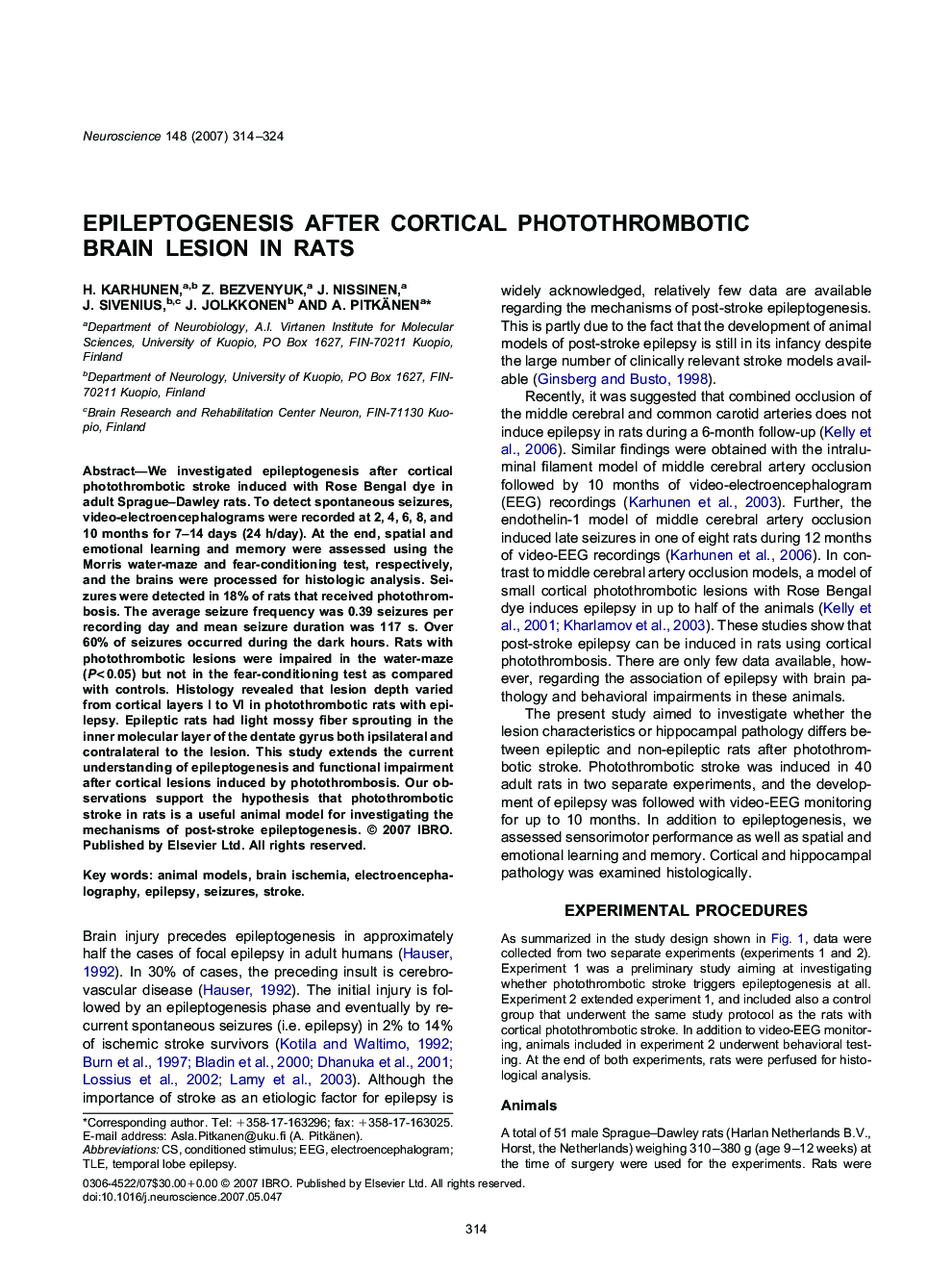| Article ID | Journal | Published Year | Pages | File Type |
|---|---|---|---|---|
| 6278659 | Neuroscience | 2007 | 11 Pages |
Abstract
We investigated epileptogenesis after cortical photothrombotic stroke induced with Rose Bengal dye in adult Sprague-Dawley rats. To detect spontaneous seizures, video-electroencephalograms were recorded at 2, 4, 6, 8, and 10 months for 7-14 days (24 h/day). At the end, spatial and emotional learning and memory were assessed using the Morris water-maze and fear-conditioning test, respectively, and the brains were processed for histologic analysis. Seizures were detected in 18% of rats that received photothrombosis. The average seizure frequency was 0.39 seizures per recording day and mean seizure duration was 117 s. Over 60% of seizures occurred during the dark hours. Rats with photothrombotic lesions were impaired in the water-maze (P<0.05) but not in the fear-conditioning test as compared with controls. Histology revealed that lesion depth varied from cortical layers I to VI in photothrombotic rats with epilepsy. Epileptic rats had light mossy fiber sprouting in the inner molecular layer of the dentate gyrus both ipsilateral and contralateral to the lesion. This study extends the current understanding of epileptogenesis and functional impairment after cortical lesions induced by photothrombosis. Our observations support the hypothesis that photothrombotic stroke in rats is a useful animal model for investigating the mechanisms of post-stroke epileptogenesis.
Keywords
Related Topics
Life Sciences
Neuroscience
Neuroscience (General)
Authors
H. Karhunen, Z. Bezvenyuk, J. Nissinen, J. Sivenius, J. Jolkkonen, A. Pitkänen,
